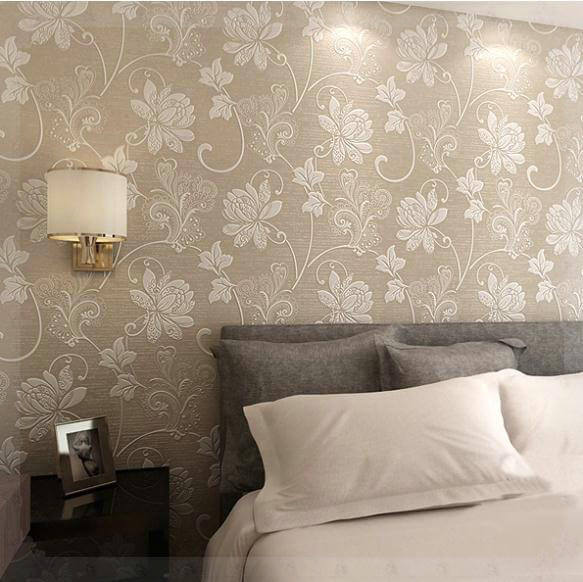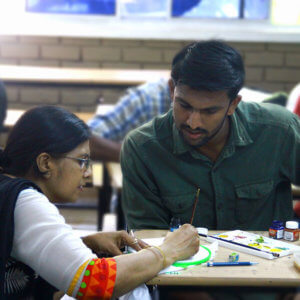
Login
X
- Home
- About Us
- Courses
- Graduation
- Diploma Certificate
- Professional Diploma
- Special sessions / Aptitude boost up
- News & Events
- Student zone
- Placement
- Gallery
- FAQ
- Contact Us

Professional graphic designers who specialise in logo design develop distinctive and personalised brand graphics for the person or business that hired them. A logo designer may operate independently, be employed full-time by a design company or advertising agency, or be employed on a temporary basis. The majority of professional logo designers have a graphic design college degree and occasionally have marketing and advertising expertise.
Designers must be able to fully immerse themselves in the field of their clients. This could entail doing extensive research on a certain product or digging deep into the particulars of how the company offers its services. To create a logo that will set the client’s company apart from the competition, extensive market and competitor research is required. A branding questionnaire or briefing meeting is the best resource a skilled logo designer can have.
Inexperienced logo designers frequently become distracted by the desire to examine the specifics of a company logo. But the most talented designers will be able to conceptualise. A designer should compile and evaluate all of the information provided regarding preferred colour and font choices, logo styles, and prospective company names or slogans while having the branding questionnaire and creative briefing notes at the ready. A first logo sketch can be created by a designer thanks to their ability to see the wider picture. The finest designers will use font libraries, mood boards, and colour wheels to be ready for the first draught. At this point, it is important to examine every possible design idea.
To think logically and strategically, great logo designers need to be able to conceive conceptually. The fact that clients will use their logo for all of their marketing endeavours must be considered by designers. Logos need to be flexible enough to use on websites, social media platforms, print ads, and promotional items. To get a better idea of how the final logo design should seem, ask the client how they want to sell their new brand.
Inexperienced logo designers frequently place an undue emphasis on their notes from the creative briefing or the responses they wrote in the branding questionnaire. It’s crucial to be adaptable and accommodating to client requests and last-minute changes. Great logo designers should also feel comfortable explaining the complexities of the design industry to their clients.
In order to be successful in the logo design business, a designer must be able to effectively explain the concept of design to a customer, accept constructive criticism of their work, provide inventive solutions to a problem, and work toward compromises on the design.

The design industry is fast-paced and frequently unwinding where equipped specialists are demanded in design, manufacturing, enterprise, and advancement throughout the year. We are the mark of contemporary learning and an imaginative melting pot of global learners and sharp intellects that come from different parts to meet concurrently. Here you acquire current and progressive instruction and you will be the facet of a multitude of experts that will evolve your second family. Our Interior Design programs suit media candidates of diverse segments, incorporating the jobless public, homemakers, low-salaried laboring specialists, and anyone inquisitive in the innovative domain.
These courses strive to combine multiple elements of composition, technology, fabrics, and techniques with explicit discernment into myriad grades of presentation. It has a holistic strategy, preparing learners to deal with an area independently and conceptualizing a perfect atmosphere for customers, and creating it functional through various comprehension processes. Our short-term Interior design courses are specially scheduled for those scholars who are inquisitive to pursue a career in this. It also illustrates that it is a bunch of mixed yet connected schemes that implicate turning an interior space into a persuasive environment for the range of mortal actions that are to put up with place there. This period equips the pupils with how to supervise and adorn the interior piece in a promising mode.
The short-term courses we offer are:
The classes are professionally structured in academic tasks and assignments with multiple practical hours to assure students of proficiency for success in a global and competitive demand. We are one of the best Interior Design academies in Kerala to offer short-time courses in Interior Design that you can track down irrespective of your existing creek of teaching. Our Interior Design programs are structured with an industry-standard curriculum, which drives it effortless for our experimenters to pursue exemplary job possibilities instantly after finishing their course.

When Pantone announced Ultraviolet as its color for this year, the industry had a fair idea what to expect in the interior design trends in 2018. The style statements in design are extended to all related fields such as fashion design and product design. The year 2018 has witnessed interesting symphonies of unsuspecting elements to add the spark in interiors and the results have been pretty impressive. Here is what you will come across in social media this year!
Hectic schedules have deprived people of soothing moments in their daily lives. This has led to a desire of subtle decoration of master bedrooms. Minimalism rules when it comes to decorating bedrooms this year. Neutral shades and calmer tones help in soothing down the occupant and minimalism ensures a cluster free environment for a peaceful sleep.
The stainless steel and wooden tone cabinets have started giving way to their slightly colorful counterparts. Of course, a white kitchen is classic but people now want their kitchens to be livelier and more in sync with their individual choices.
The use of wood in flooring and furniture can never be replaced. What this year brings to it is change of preferences. Instead of plain strip locks, herringbone patterns have emerged to be a common wooden feature. The warmth and elegance of wooden shades have been extensively used in imparting a rich interior look.
A bathroom these days is a get-away sanctuary- spa-like features add element of luxury and comfort where in a person can relax and seek serene surroundings. Organic touch ups in the form of wooden elements and natural stones along with a sprinkle of greenery here and there, takes bathrooms a few notches up.
Limited textures are trending. What could be more appealing than a touch of nature? Popular fashion and fabric patterns denote a constant presence of floral imprints, mimicking the 70’s. The difference here is the limited use in the interiors, such as in wallpapers and bed linens. The use is restrained and yet experimental.

While 2017 did see some statement colors making rounds in premium interiors, 2018 is more about popping colors and it gets only bolder- it happily accommodates gold and metallic hues. This does increase the work of an interior designer since it calls for clever combinations that stay easy on the eyes and continue to delight the occupant.
This year the focus is on vintage pieces- of lighting, furniture, curios, accessories and even flower pots. Yes, you heard that right. This is THE year when you should not hesitate to splurge a handsome amount on that antique furniture you have been longing for since eternity! These elements add a defining value to an interior and end up outlining the style quotient of the spaces they occupy.
Each year ushers in a new dawn of fashion and design specifications. It is important to understand that these ‘rules’ are a simple description of what’s hot and happening in interior design arena, specially defined for trend-seekers. However, the ultimate value of an interior is in the way it reflects the aesthetic tastes of the owner, some of whom eventually become trend-setters.

In our previous posts on interior designing course, we discussed on different aspects of the courses and colleges like things to consider when choosing an interior designing course or college, must have features of an interior designing college, and top reasons for why you should take interior designing as your career choice. You can check these posts in our blog. In this article we deal with some steps to become a successful interior designer.
We will discuss about five major steps to shine as a leading interior designer. They are; 1) getting a degree in interior designing course, 2) having strong practical knowledge in the field, 3) building a strong portfolio, 4) finding a job, and 5) growing your network. Before moving to the steps, let’s look who can study an interior designing course and become an interior designer.
Interior designing course deals with the studies on designing the interior of living and working spaces. There will be many areas of specialization in an interior designing course. If you have been appreciated for arranging your room or designing a space with right furniture, colours, and lightings then a career in interior designing can be right for you.
Studying an interior designing course requires creativity, imagination, an artistic approach to the things, communication skills, coordination and management abilities, and business and marketing skills. Originality of ideas and innovations in designs are two critical factors if you really want to shine in the profession. If you are confident of these skills and abilities, then you can definitely pursue an interior designing course and become a successful interior designer.
Five steps to become an interior designer
Thought a formal education is not a must, most of the top interior design firms hire people who have a bachelors or master degree in interior design. A degree in the specific field is preferred. Interior designing course is offered by numerous reputed institutions all over India.
Students who have passed or about to appear in the qualifying Plus Two standard (Higher Secondary) exam are eligible to take up an interior designing course. So, in order to increase your chances of being recruited by the top companies, make sure you take formal education.
Just studying an interior designing course is not enough to become a successful interior designer. While interior design is a field of fierce and intense competition, having a strong practical knowledge is a must to shine and even exist in the field.
Though an interior designing course will help you enhance your skills and abilities and learn all the theoretical concepts, make sure you also learn to transform that theoretical knowledge into practice. Working on projects, getting internships in big companies and volunteering for different organizations during the course will help to increase your practical skill.
Displaying high-quality examples of your works and projects compiled in a professional, well-organized portfolio will be crucial to starting your career as an interior designer. In your interior designing course you will get guidance from your instructors on creating a nice portfolio.
A well-built portfolio will not only help top employers to see the quality of your work and projects you completed but will also give you a chance to show off your creative skills and abilities. Make sure that you keep quality photographs of all of your works and projects to compile them in your portfolio.
Having a strong portfolio in your hand, now it is the turn to find a right job. As we mentioned, holding a degree in interior designing course alone will not help you find a job in the field. Currently there is a need for 100000 interior designers in India alone. The industry is growing at a rate of 20% and is expected to do so until 2018. So, you just need to knock the door until it opens.
Competition is high, so a high paying, professional job may not be easy to find. Start with small projects. If you are skilled, bigger one will come in your way. Again we say, just study of interior designing course will not bring you the job.
This is very important for the success in your career as an interior designer. While the college where you study interior designing course gives you knowledge, strength of your network gives you projects and brings you money. While in college, take advantage of career services to search for jobs and connect with alumni in the field.
Let the neighbors, friends, family, community organizations, businesses, contractors, manufacturers, and builders know your skills and services using all possible different effective strategies. This will help you get their projects and establish yourself as a brand.
So, all start with pursuing an interior designing course and polishing your designing skills and marketing abilities. Always keep in mind, practice is the key and network is the door.
Phone: 0495 272 2242